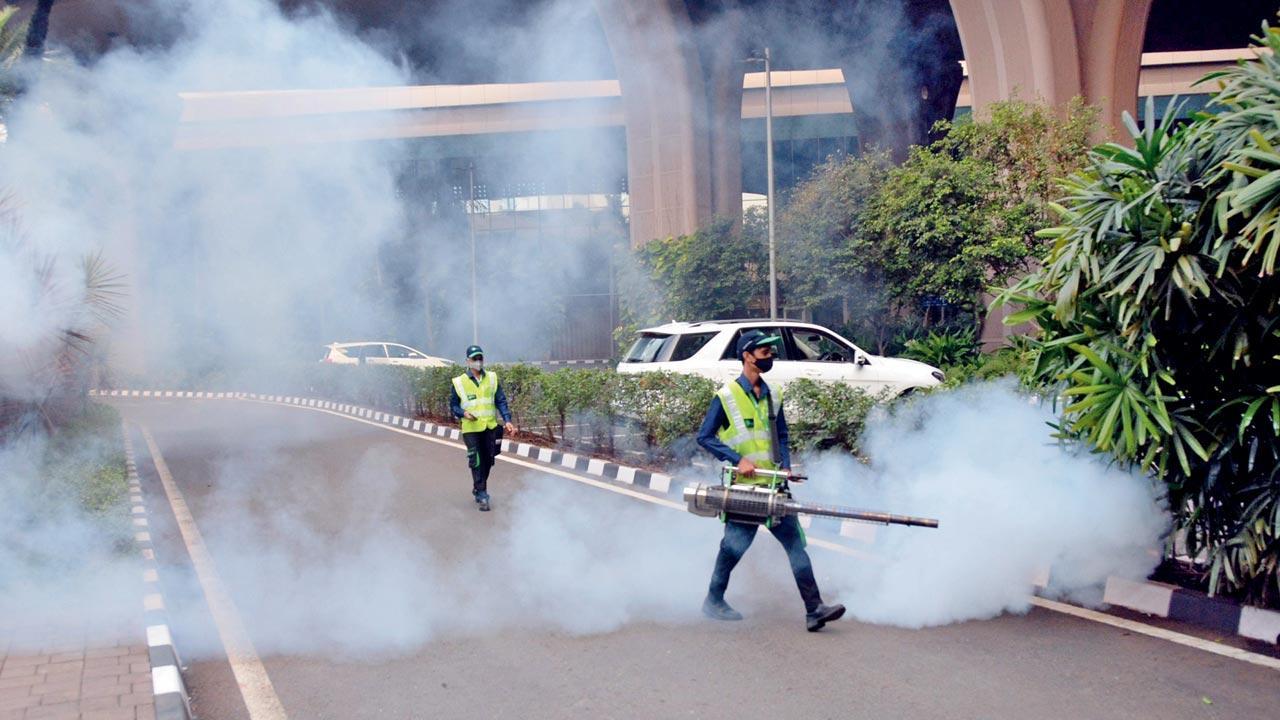

Home / Mumbai / Mumbai News / Article /
Mumbai: Malaria cases fall in two wards in city
Updated On: 02 July, 2024 01:58 PM IST | Mumbai | Eshan Kalyanikar
G-South sees nearly 60 per cent fall in cases, while G-North maintains last year’s numbers

BMC uses the fog machine to prevent the breeding of mosquitos. File pic/Sayyed Sameer Abedi
Malaria data from areas like G-South, which includes Worli and Mahalaxmi, showed a decrease in cases in June compared to the previous year. In contrast, cases in G-North, which includes Dadar, Dharavi, and Mahim, have remained similar to those in 2023. The two wards have traditionally reported comparatively higher cases of both dengue and malaria, attributed to water accumulation and construction activities.
There has been almost a 60 per cent reduction in malaria cases for June in G-South. Last year, the ward reported 93 cases, while this year there were only 39 cases. “Prevention and surveillance activities started in May. We conducted house-to-house surveys, and any case of fever was immediately tested and treated,” said an official.



